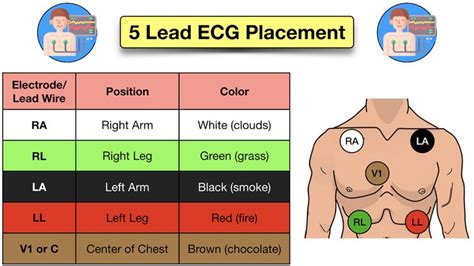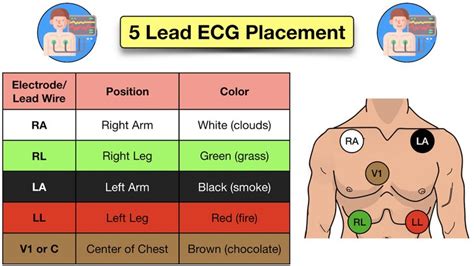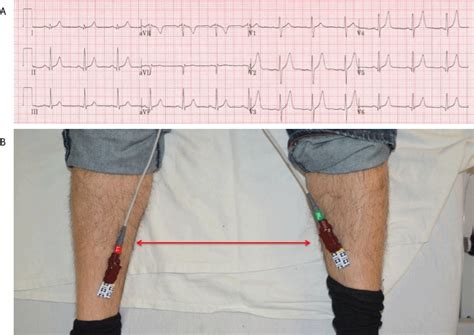Intro
Master accurate lead placement for ECG readings with these 6 expert tips. Learn how to optimize electrode placement, reduce noise and artifacts, and ensure precise heart rhythm monitoring. Improve ECG accuracy and patient diagnosis with our comprehensive guide, covering limb and chest lead placement, skin preparation, and more.
The importance of accurate lead placement for ECG (electrocardiogram) cannot be overstated. A properly placed ECG lead is crucial for obtaining high-quality tracings, which are essential for diagnosing and monitoring various heart conditions. Inaccurate lead placement can lead to misinterpretation of ECG results, resulting in delayed or incorrect diagnoses, and potentially life-threatening consequences. In this article, we will discuss six tips for accurate lead placement for ECG.

Understanding the Basics of ECG Lead Placement
Before we dive into the tips for accurate lead placement, it's essential to understand the basics of ECG lead placement. A standard 12-lead ECG requires the placement of 10 electrodes on the body: four limb leads (RA, LA, RL, and LL) and six precordial leads (V1-V6). The electrodes are placed on specific locations on the body to capture the electrical activity of the heart from different angles.
Tip 1: Prepare the Skin
The first step in accurate lead placement is to prepare the skin. Clean and dry the skin thoroughly, removing any oils, lotions, or dirt that may interfere with electrode adhesion. Shave any hairy areas, as hair can also interfere with electrode placement. Use a gentle cleanser and pat the skin dry with a towel.
Lead Placement Techniques
Now that we've covered the basics, let's move on to the lead placement techniques.

Tip 2: Use the Correct Electrode Placement
Use the correct electrode placement for each lead. The American Heart Association (AHA) recommends the following electrode placements:
- RA (right arm): Place the electrode on the right arm, just above the wrist.
- LA (left arm): Place the electrode on the left arm, just above the wrist.
- RL (right leg): Place the electrode on the right leg, just above the ankle.
- LL (left leg): Place the electrode on the left leg, just above the ankle.
- V1-V6: Place the precordial electrodes on the chest, as follows:
- V1: 4th intercostal space, right sternal border
- V2: 4th intercostal space, left sternal border
- V3: Midway between V2 and V4
- V4: 5th intercostal space, mid-clavicular line
- V5: 5th intercostal space, anterior axillary line
- V6: 5th intercostal space, mid-axillary line
Common Mistakes to Avoid
Even with proper training, mistakes can still occur. Let's discuss some common mistakes to avoid.

Tip 3: Avoid Electrode Creep
Electrode creep occurs when the electrode shifts or moves during the ECG recording, resulting in inaccurate tracings. To avoid electrode creep, ensure the electrodes are securely attached to the skin and use electrode adhesive or gel to prevent movement.
Tip 4: Use the Correct Electrode Size
Using the correct electrode size is crucial for accurate lead placement. Use electrodes that are specifically designed for ECG recordings, and ensure they are the correct size for the patient's skin.
Tip 5: Minimize Muscle Artifact
Muscle artifact can occur when the patient's muscles contract or relax during the ECG recording, resulting in inaccurate tracings. To minimize muscle artifact, ensure the patient is relaxed and comfortable during the recording, and use a muscle relaxant if necessary.
Tip 6: Verify Lead Placement
Finally, verify lead placement before starting the ECG recording. Check the electrode placement against the AHA guidelines and ensure the electrodes are securely attached to the skin.
Conclusion
Accurate lead placement is crucial for obtaining high-quality ECG tracings. By following these six tips, you can ensure accurate lead placement and improve the quality of your ECG recordings. Remember to prepare the skin, use the correct electrode placement, avoid electrode creep, use the correct electrode size, minimize muscle artifact, and verify lead placement.
What is the most common mistake in ECG lead placement?
+Electrode creep is the most common mistake in ECG lead placement. This occurs when the electrode shifts or moves during the ECG recording, resulting in inaccurate tracings.
How can I minimize muscle artifact during ECG recording?
+To minimize muscle artifact, ensure the patient is relaxed and comfortable during the recording, and use a muscle relaxant if necessary.
What is the recommended electrode placement for the V1 lead?
+The recommended electrode placement for the V1 lead is the 4th intercostal space, right sternal border.
We hope this article has provided you with valuable insights into accurate lead placement for ECG. If you have any further questions or would like to share your experiences, please feel free to comment below.

